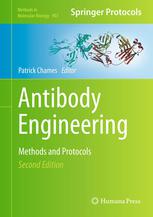

Most ebook files are in PDF format, so you can easily read them using various software such as Foxit Reader or directly on the Google Chrome browser.
Some ebook files are released by publishers in other formats such as .awz, .mobi, .epub, .fb2, etc. You may need to install specific software to read these formats on mobile/PC, such as Calibre.
Please read the tutorial at this link: https://ebookbell.com/faq
We offer FREE conversion to the popular formats you request; however, this may take some time. Therefore, right after payment, please email us, and we will try to provide the service as quickly as possible.
For some exceptional file formats or broken links (if any), please refrain from opening any disputes. Instead, email us first, and we will try to assist within a maximum of 6 hours.
EbookBell Team

4.3
38 reviewsMore than ever, antibodies are being recognized as a major drug modality in a variety of diseases, including cancer, autoimmune diseases, infectious diseases, or even neurodegenerative disorders. Over 30 therapeutic antibodies have been approved and novel molecules are entering clinical trials at an average rate of 50 per year and that is predicted to continue well into the future. Notwithstanding the many achievements already made in the field, there is still a lot of room for improvements for these molecules in terms of activity, and a plethora of approaches have been attempted to optimize these molecules. Antibody Engineering: Methods and Protocols, Second Edition was compiled to give complete and easy access to a variety of antibody engineering techniques, starting from the creation of antibody repertoires and efficient ways to select binders from these repertoires, to their production in various hosts, their detailed characterization using various well established techniques, and to the modification and optimization of these lead molecules in terms of binding activity, specificity, size, shape, and more. Written in the successful Methods in Molecular Biology™ series format, chapters include introductions to their respective topics, lists of the necessary materials and reagents, step-by-step, readily reproducible protocols, and notes on troubleshooting and avoiding known pitfalls.
Authoritative and easily accessible, Antibody Engineering: Methods and Protocols, Second Edition serves as an invaluable resource for both experts and those new to the field, and most of all as a source of inspiration for the creation of the antibodies of tomorrow.